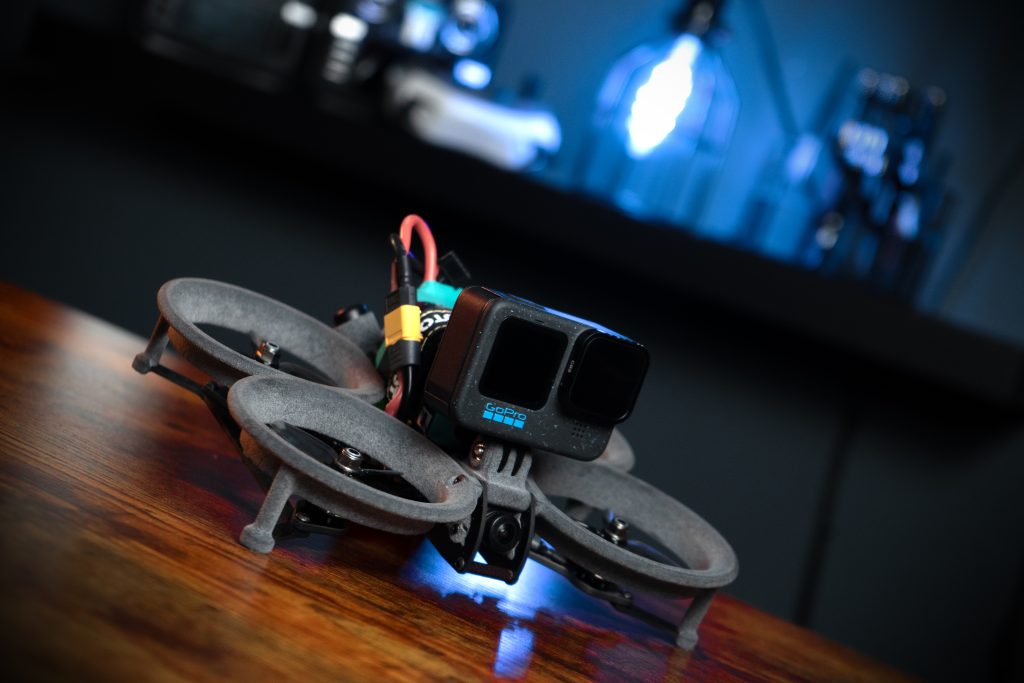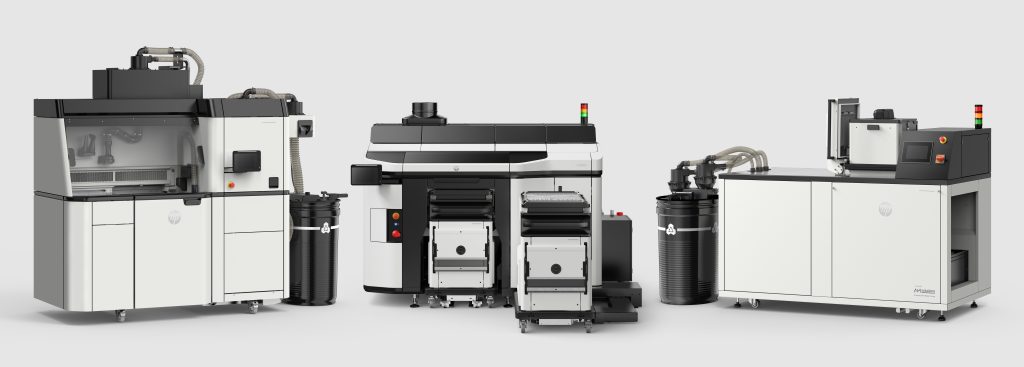Join the Expert Committee for the 2024 3D Printing Industry Awards to help select the winners!
Aerospace component manufacturing firm Unusual Machines has integrated HP’s Multi Jet Fusion (MJF) 3D printing technology into its drone production efforts.
With this move, the firm aims to improve the performance, durability, and domestic manufacturing of its first-person view (FPV) drones. The decision to adopt HP’s Multi Jet Fusion technology was made after an extensive partnership between Unusual Machines and HP 3D Printing, during which both companies collaborated to assess the best components to introduce the MJF production process.
“In order for our products to remain competitively priced while moving production to the U.S., we have to use innovative production processes,” said Allan Evans, CEO of Unusual Machines. “The implementation of HP’s advanced 3D printing technology is not only helping us control costs, but allows us to create higher quality products capable of meeting the performance demands of FPV drones.”

MJF for superior drone performance
Unusual Machines says it is prioritizing domestic manufacturing by partnering with U.S.-based Forecast3D to produce MJF components for the SkyLite drone. This move enhances product quality and supports American industry, making the SkyLite drone the first commercial product from Rotor Riot to feature these advanced, locally-made components.
The integration of HP’s Multi Jet Fusion technology brings several advantages to the production of drone components. Known for its ability to create complex designs with high strength and durability, MJF allows Unusual Machines to produce intricate, lightweight drone parts that meet the rigorous standards of FPV drone operations. Multiple parts can be manufactured simultaneously with MJF, speeding up production while maintaining superior finishes.
Moreover, Unusual Machines has successfully tested and validated TPU materials available through HP’s MJF technology. These materials have proven resilient and critical for FPV drones that often experience high-impact crashes. According to Unusual Machines, components made from TPU are “virtually indestructible,” even in the most demanding circumstances.

Increasing production of 3D printed drones
Over the past few years, many 3D printed drones have made their way to the headlines. A novel example includes the Dutch technology firm The Drone Bird Company using 3D printing to produce bird-shaped drones for bird control in industries like aviation and agriculture.
Working with Advanced Laser Materials (ALM), EOS, and Parts on Demand, the company employs Selective Laser Sintering (SLS) and lightweight carbon materials to create drone bodies and parts. This partnership has led to faster development, lower costs, and more design flexibility. Mimicking birds of prey, these drones effectively deter wildlife from airfields and farmlands.
Continuous Composites secured a $750,000 Phase II SBIR contract from the U.S. Department of Defense (DoD) to demonstrate its Continuous Fiber 3D Printing (CF3D) technology in collaboration with the Air Force Research Laboratory (AFRL). This project facilitated the 3D printing of multifunctional composite drone wings for low-cost, disposable unmanned aircraft.
Using CF3D, which combined continuous fiber reinforcements with thermosetting resin, the partnership optimized and fabricated lightweight drone wings. The initiative aligned with the AFRL’s goal of developing cost-effective, advanced aerostructures, with the final product undergoing performance testing and comparison to traditional methods.
Elsewhere, agricultural technology startup Dragontech used 3D printing to develop a drone-based data platform for farmers. The company designed and prototyped components with MakerBot 3D printers to integrate sensors into commercial drones. The platform aimed to improve crop yield predictions and address climate uncertainties. Founded in 2020, Dragontech planned to expand beyond agriculture, utilizing digital inventory for on-demand production of parts.
What 3D printing trends do the industry leaders anticipate this year?
What does the Future of 3D printing hold for the next 10 years?
To stay up to date with the latest 3D printing news, don’t forget to subscribe to the 3D Printing Industry newsletter or follow us on Twitter, or like our page on Facebook.
While you’re here, why not subscribe to our Youtube channel? Featuring discussion, debriefs, video shorts, and webinar replays.
Featured image shows an FVP drone developed using HP’s MJF technology. Photo via Unusual Machines.



